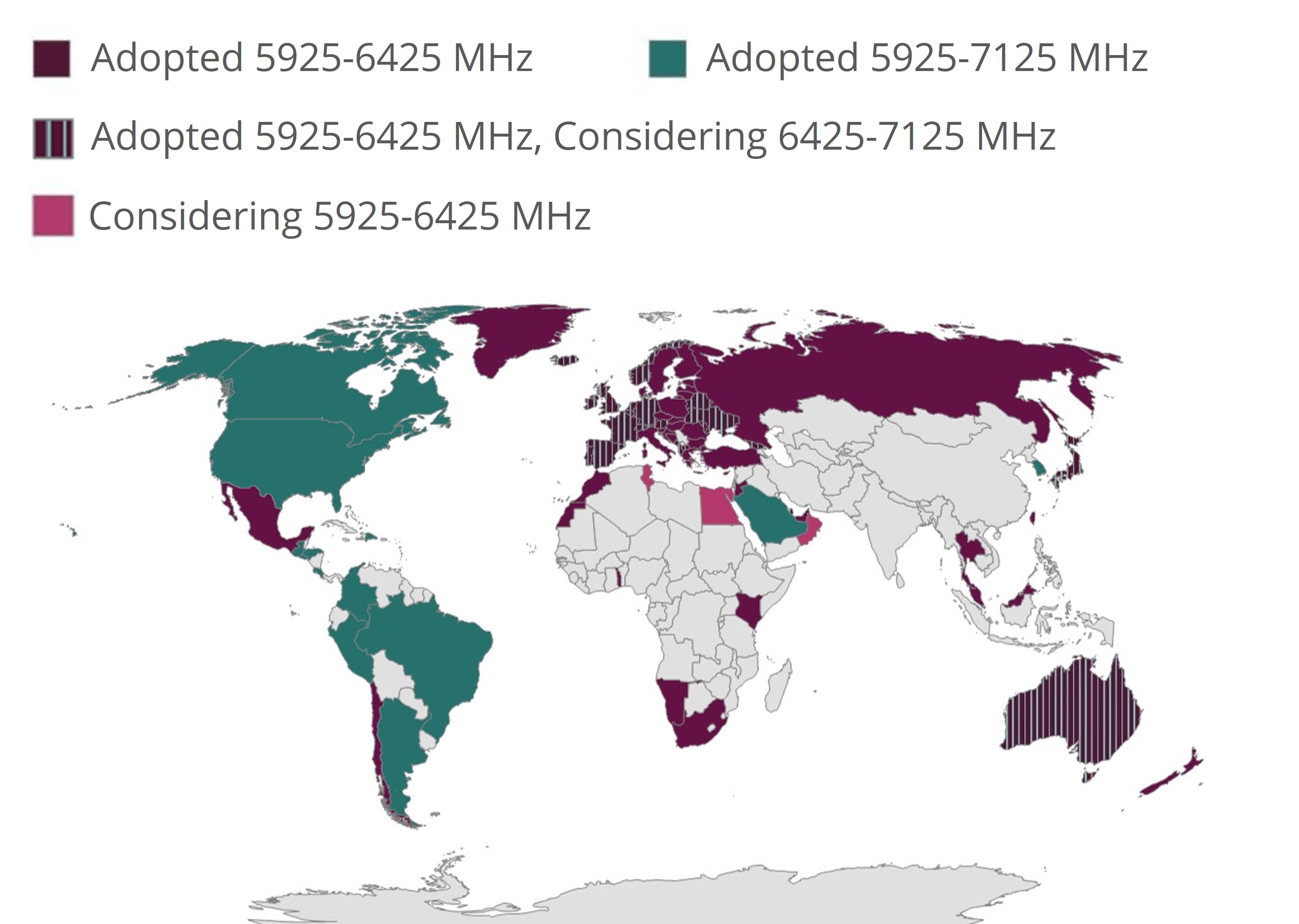
Unlicensed spectrum, where Wi-Fi® operates, is one of society’s most valuable resources. The Wi-Fi industry’s good stewardship of unlicensed spectrum has enabled significant innovation, and global support for Wi-Fi operation in 6 GHz – designated as Wi-Fi 6E and Wi-Fi 7 devices – continues to grow as regulators and governments recognize the tremendous advancements brought by devices operating in the band. Wi-Fi Alliance® has made it our multi-year mission to drive the worldwide adoption of the full 6 GHz spectrum. Read on to learn how Wi-Fi in 6 GHz benefits users and drives immense economic value worldwide.
Benefits of 6 GHz Wi-Fi
- Wi-Fi® Spectrum Requirements (2024): Report to analyze spectrum requirements for Wi-Fi technology to deliver gigabit connectivity to residential premises
- Wi-Fi®: The Sustainable Choice: Blog detailing the sustainability advantages of Wi-Fi
- Study - Sustainability Benefits of 6 GHz Spectrum Policy: Report analyzing the sustainability benefits of 6 GHz Wi-Fi in combating climate change
- Sustainability Benefits of 6 GHz Spectrum Policy - Graphics: Graphics from our Sustainability Benefits of 6 GHz Spectrum Policy report
- Consumer Perspective on Unlocking 6 GHz Wi-Fi®: Highlights sheet describing the consumer benefits of Wi-Fi in 6 GHz
- 6 GHz Wi-Fi®: Connecting to the future: Report detailing the importance of 6 GHz Wi-Fi
Economic value of Wi-Fi
- Value of Wi-Fi: Website describing the economic value of Wi-Fi and unlicensed spectrum
- Economic Value of Wi-Fi® Highlights: Highlights sheet detailing the economic value of Wi-Fi
- Global Economic Value of Wi-Fi® (2021-2025) report: Study assessing the global economic value of Wi-Fi that highlights the importance of Wi-Fi worldwide
- Economic Value of Wi-Fi® Graphics: Graphics from our Global Economic Value of Wi-Fi report
Wi-Fi in 6 GHz
- 6 GHz AFC Resources: Website describing Wi-Fi Alliance’s specifications, test plans, and training modules to enable the implementation of 6 GHz standard power devices under the AFC system
- Wi-Fi 6E Highlights: Highlights sheet discussing how Wi-Fi 6E brings Wi-Fi into 6 GHz
- Wi-Fi CERTIFIED 6®: Website describing the features and benefits of Wi-Fi CERTIFIED 6 and Wi-Fi 6E
- Wi-Fi CERTIFIED 6® Highlights: Highlights sheet showcasing the key features and capabilities of Wi-Fi CERTIFIED 6
- Wi-Fi CERTIFIED 7™: Website describing the features and benefits of Wi-Fi CERTIFIED 7
- Wi-Fi CERTIFIED 7™ Highlights: Highlight sheet discussing key features of Wi-Fi CERTIFIED 7
- Regulations Enabling 6 GHz Wi-Fi: Website displaying the latest regulations enabling 6 GHz spectrum for Wi-Fi



